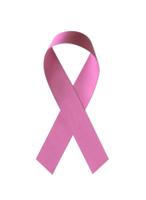Giving or receiving a beloved book is the warmest of fuzzies.
Even though, yes, book gifts can be fraught, much like clothing gifts. I still remember clothing I’ve given and received that missed the mark.
What if you give a new love interest your most treasured book and they can’t get past the first chapter? Or you can’t get into their favorite Harry Potter book gift set they give you for Christmas? (Me. Sorry, I’ve tried twice.)
There are no easy answers. My feelings are a tiny bit hurt when someone I care about doesn’t enjoy a book I recommend or give, but I’m a big girl (sort of), and can brush most of it off, though seriously, can you please just give it one more chapter for the love of Stephen King? Despite the precariousness, I still think we should give it a go. The book giving, I mean. Maybe not the clothing gifts, like deciding on a camouflage mini skirt as a birthday present, though I did wind up eventually liking and wearing it.
Iceland agrees with me. The country came up with a holiday tradition during World War II that has stuck around like the pages of a book accidentally dropped in a tub: Jólabókaflód. Say it with me: yo-la-boke-uh-flowed.
Every year wise and well-read Icelanders participate in this sweet custom, which translates into Christmas book flood or Yule book flood. They exchange books on Christmas Eve and spend the evening reading and drinking hot chocolate or some other hot holiday beverage. I mean, are they trying to sweet talk me into becoming an expatriate? Because the sound of that cozy scenario has me checking to see if my passport is still current.
The tradition started during the war when paper was one of the few things not rationed. Giving books as gifts was a way to continue exchanging presents over the holidays when other commodities were scarce.
Jólabókaflód entails giving new books — the Icelandic book trade sends a new annual catalog to every household in the country in mid-November during the Reykjavik Book Fair, which people use to find gifts. Should you choose to adopt this delightful ritual, I suggest we also include books that have been in circulation for years, decades or centuries. Icelanders won’t mind, will they? Do they even have to know? We’ll just keep it our little secret here in the U.S.
I’ve given books as gifts all my life, beginning with my father, who wasn’t picky and read anything that involved war, crime, mystery and military. Several years ago I gave my non-reading brother a book I adore, “Station Eleven,” by Emily St. John Mandel, with the secret intention of turning him into a reader. It didn’t work. I’m not sure if someone can pick up a reading habit later in life. Maybe a love for the written word needs to be ingrained when you’re young.
My niece is my favorite current recipient of books, as she’s 13 and young enough that I can burn a few reading-related neural pathways before it’s too late. I especially like to give the ones I loved as a kid: “Are You There, God? It’s Me, Margaret,” by Judy Blume; “Anne of Green Gables,” by Lucy Maud Montgomery; the Nancy Drew mysteries. This Christmas it will be books from Francine Pascal’s Sweet Valley High series, one of my favorites when I was her age. I’d also like to try Lois Duncan’s books, but worry they might be a little dark for her right now.
“There’s not a lot of physical media to give people anymore other than books,” said Ben Hotchkiss, owner of 2 Buck Books on the north side of Colorado Springs. “CDs aren’t a thing, DVDs aren’t a thing. It’s records and books, unless you’re giving expensive electronics or toys. As far as media goes, it’s the last collectable media.”
Now that we’ve agreed books make excellent gifts, how do we go about choosing the right one? Should you give someone a book inside or outside their favorite genres? One of your favorites or something you would never read but think they would like? For example, many years ago a boyfriend gave me Paul Bowles’ “The Sheltering Sky,” an ominous, eerie book that I would never have chosen and gave the side-eye at first, but wound up liking very much.
Joe Shearer, owner of Basecamp Books and Adventure on the city’s east side, recommends giving people a book they wouldn’t normally have picked up or a book on a topic they’re either not familiar with or one on a topic you’re passionate about to generate conversations.
“You deepen your relationship over your love of the same book or experience,” Shearer said. “Any book you give gives them an opportunity to learn and grow and explore ideas that aren’t their own.”
Morgan Hymer, store manager at Barnes & Noble in Briargate, has a few tactics when it comes to giving books.
“Cookbooks are huge for gifts,” she said. “Usually for me, with my family, I choose the newest and most popular book in their favorite area of the store.”
Here are a few recommendations from those who spend their lives immersed in the written word:
Fiction
• Morgan Hymer, store manager at Barnes & Noble in Briargate: “James” by Percival Everett, a take on Mark Twain’s “Adventures of Huckleberry Finn” from someone else’s viewpoint.
• Ben Hotchkiss, owner of 2 Buck Books: “The Things They Carried” by Tim O’Brien, a collection of short stories that’s part memoir and part fiction about American soldiers in the Vietnam War, or classics like “To Kill a Mockingbird” by Harper Lee, “Count of Monte Cristo” by Alexandre Dumas, and “Catch 22” by Joseph Heller.
• Joe Shearer, owner of Basecamp Books and Adventure: “1984” by George Orwell; “The Mountain in the Sea” by Ray Nayler, for sci-fi lovers, about a marine biologist who travels to study octopuses; anything by Haruki Murakami for those into surreal literary fiction
.
Nonf
iction
• Hymer: “The Bookshop: A History of the American Bookstore” by Evan Friss.
• Hotchkiss: “The Devil in the White City” by Erik Larson, a true tale about the 1893 World’s Fair in Chicago and a serial killer.
• Shearer: “Desert Solitaire” by Edward Abbey, about the author’s two summers in Utah’s canyonlands; “Furious Hours” by Casey Cep, a true crime/biography book about a serial killer and author Harper Lee
.
Young adult
• Hymer: “Murtagh” by Christopher Paolini, fantasy book for dragon lovers.
• Hotchkiss: “Wonder” by R.J. Palacio, about a 10-year-old who has a syndrome that has disfigured his face; Harry Potter books by J.K. Rowling; “Sisterhood of the Traveling Pants” books by Ann Brashares.
• Shearer: “Throne of Glass” fantasy series by Sarah J. Maas.
Kids
• Hymer: “Ferdinand” by Munro Leaf and “Corduroy,” by Don Freeman.
• Shearer: “Diary of a Wimpy Kid” series by Jeff Kinney; “Dog Man” graphic novels by Dav Pilkey; “Five Nights at Freddy’s” graphic novels by Scott Cawthon and Kira Breed-Wrisley.
This post was originally published on here
















